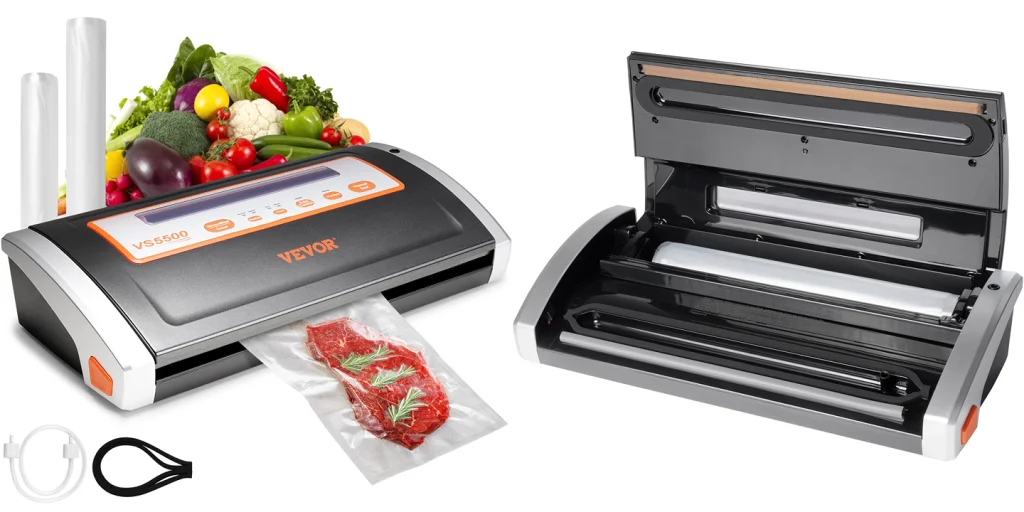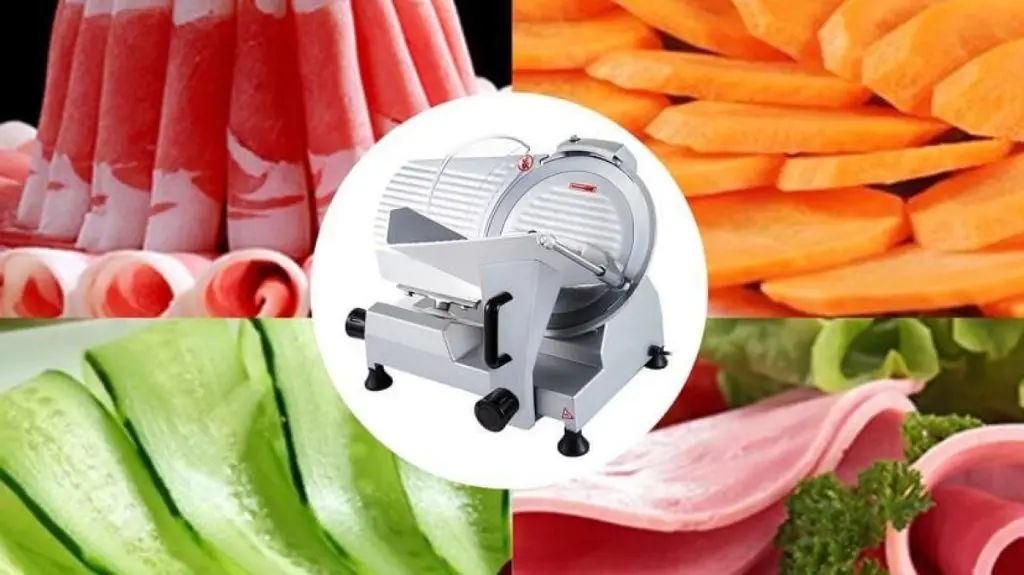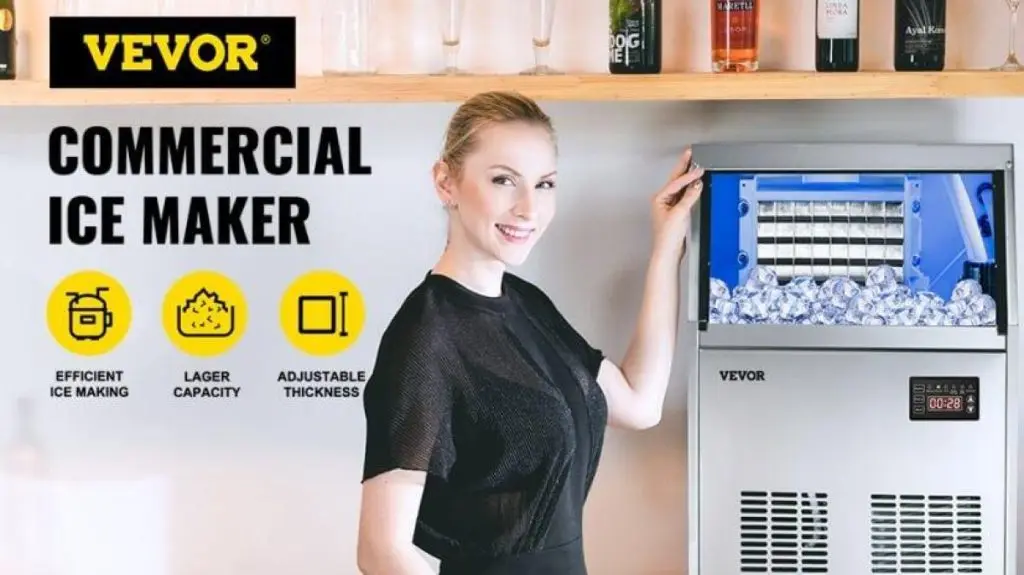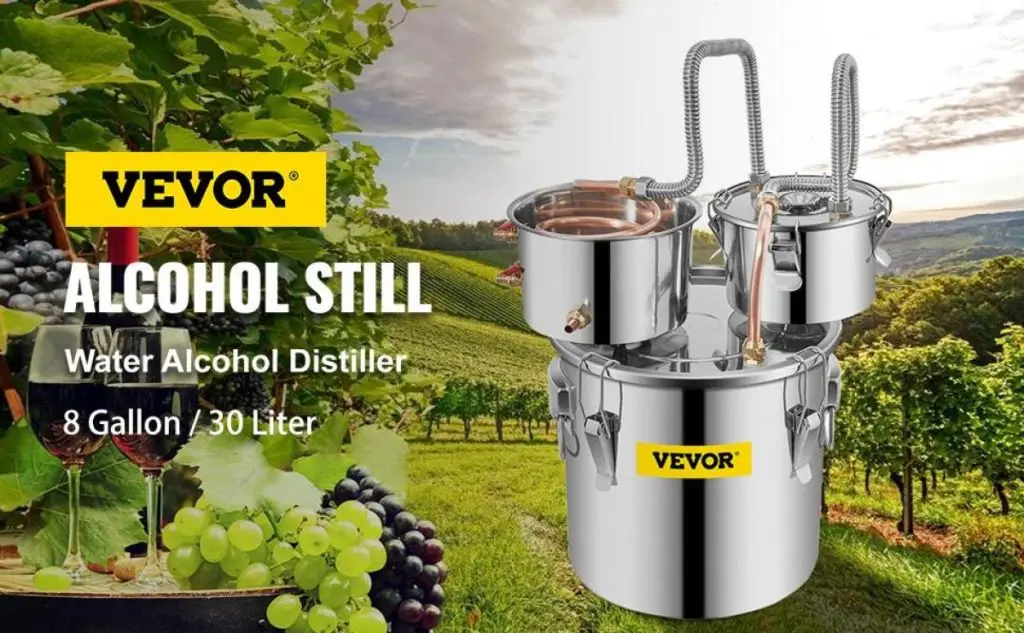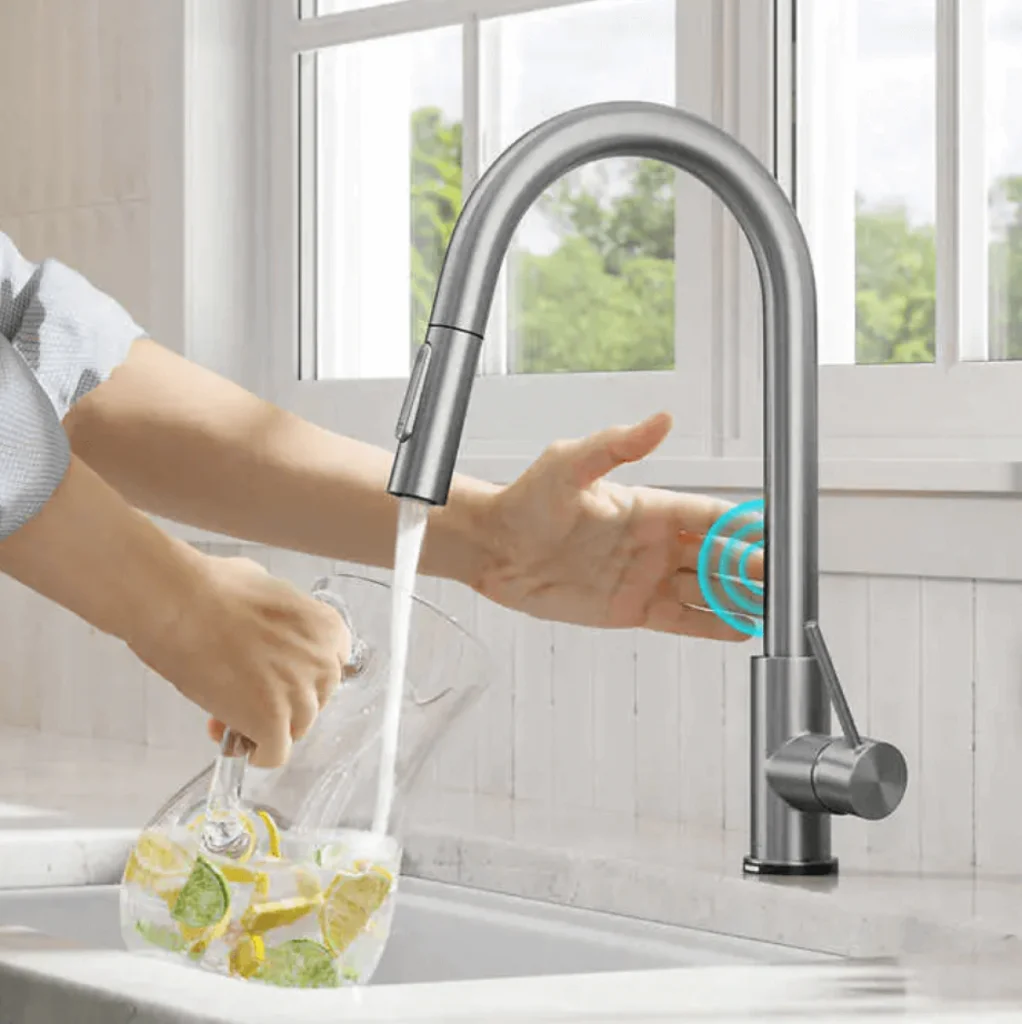How long does vacuum-sealed meat last? It is a crucial question because everyone must eat and use meat. Nowadays, everyone has to put the meat in the freezer or fridge. But they want to extend their life even more, for weeks, months, or years. Then, the freezing, vacuum sealing, and fridge pop out on the top choices for better storage. Vacuum seal is the best method on the list with long-lasting results.
But how much can you extend your meat shelf life? It depends on the meat type, storage options, and vacuum sealing. This article will shed light on different storage systems with the meat storage life. We have added some tips for safe vacuum sealing.
Table of contents
Part 1: How Long Does Vacuum-sealed Meat Last?
Vacuum seals can bestow a long life to your preserved meat. But it mostly depends on the type of meat you are using with the storage systems such as freezer and fridge.
In the freezer
A freezer is a magician, ensuring a better life span than the fridge or other options. This is because of the optimal temperature, which is suitable for safe storage and keeps the molds and bacteria away.
Let’s talk about the different meat materials at this point.
Luncheon meat(unopened)
The typical shelf life of the luncheon, yet unopened, is up to 1-2 months in the freezers. Vacuum sealing can increase its life to 6 months in the freezer storage.
Luncheon meat(opened)
If you have opened the luncheon meat, expect at least 1-2 months of storage in the freezer. In vacuum sealing, shelf life is almost half of unopened— 3 months
Hotdogs
Hotdogs can offer you long-term preservation in the freezer for up to 2 months. For extended storage, seal it up in the vacuum bags and suck the air out. It takes almost six months for it to expire.
Ground meat
One of the long-lasting pieces of meat is ground meat. In the freezer, it offers a more extended preservation. How much? Up to 3-4 months alone in the freezer. If you are ready for extended storage up to 1 year, invite the vacuum sealing for this process.
Mackerel, Salmon, Tuna
Mackerel, Salmon, and Tuna remain fresh for two months in the freezer. Keep it up to 3 months untouched with the vacuum sealing.
Lobsters, Crabs(de-shelled)
Predict the future of fresh lobsters and crabs for up to 4 months in the freezer. For up to 12 months of storage, you can consider vacuum sealing.
Shrimp, Crayfish
Shrimp and crayfish offer 3-6 months of freezer storage. Shelf life is 10-12 months with the vacuum sealing.
| Food | Normal Shelf | Vacuum Shelf |
| Meat | 4-12 months | 2-3 years |
| Luncheon Meat (unopen) | 1-2 months | 6 months |
| Luncheon Meat (open) | 1-2 months | 3 months |
| Hotdogs | 1-2 months | 6 months |
| Ground Meat | 3-4 months | 1 year |
| Mackerel, Salmon, Tuna | 2 months | 3 months |
| Lobster, Crab (de-shelled) | 2-4 months | 12 months |
| Shrimp, Crayfish | 3-6 months | 10-12 months |
In the Fridge:
In the fridge, you can store the eggs and chicken.
Egg
Egg life is the same with or without the vacuum. It remains safe for almost one week.
Chicken(cooked)
Cooked chicken is good for 3-4 days typically and two weeks with a vacuum seal.
Chicken(raw)
Raw chicken remains safe for 1-2 days typically. You can double up its life to 5 days with the vacuum sealing.
| Food | Normal Shelf | Vacuum Shelf |
| Eggs (hardboiled) | 1 week | 1 week |
| Chicken (cooked) | 3-4 days | 2 weeks |
| Chicken (raw) | 1-2 days | 4-5 days |
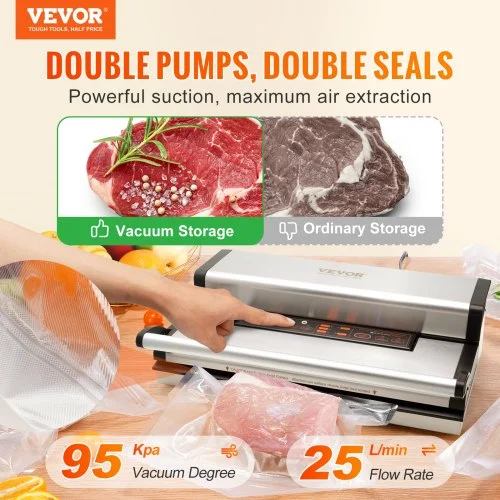
Part 2: 4 Factors Affecting Shelf Life of Vacuum Sealing Meat
Several factors can increase or decrease the shelf life of your meat. These include:
Storage Temperature
Freezer and fridge offer an excellent storage temperature of less than 4°C. Compared to it, higher temperatures allow bacterial growth and instantly spoil food. You have to consider the freezing temperature for the storage.
Meat Type
Meat type also determines the storage duration. For example, the meat of beef and lamb has a longer shelf life. With a vacuum, you can assume a long life in the freezer and fridge. On the other hand, poultry meats such as Chicken or Turkey do not offer long-term storage compared to red meat.
Quality of Meat
Old and spoiled meat is of no use. If you are thinking of preserving the meat, consider the fresh meat. It will allow quick preservation without the risks of spoiling beef earlier. Think about the best quality of meat. Also, your vacuum seal can be decisive. VEVOR vacuum sealers offer excellent airtight sealing, allowing a longer shelf life.
Seal Integrity
If your seal has some leaks, it might allow the entry of bacteria into the meat. The decomposition of meat will start, and it will smell. It is one of the most significant factors behind the shortened life of your Vacuum-sealed meat.
Part 3: How to Vacuum Seal Meat?
Vacuum sealing is effective for meat, fruit, and vegetables. You know how to use the vacuum sealer, understand the suction process, and launch your first practice on vacuum sealing. The following steps are practical descriptions of the vacuum seal meat.
Prepare the meat
Wash your meat. Take time to remove the excess fat and dust if it is present. Look around and remove the bone fragments. Make it perfect for storage with the ultimate cleaning job.
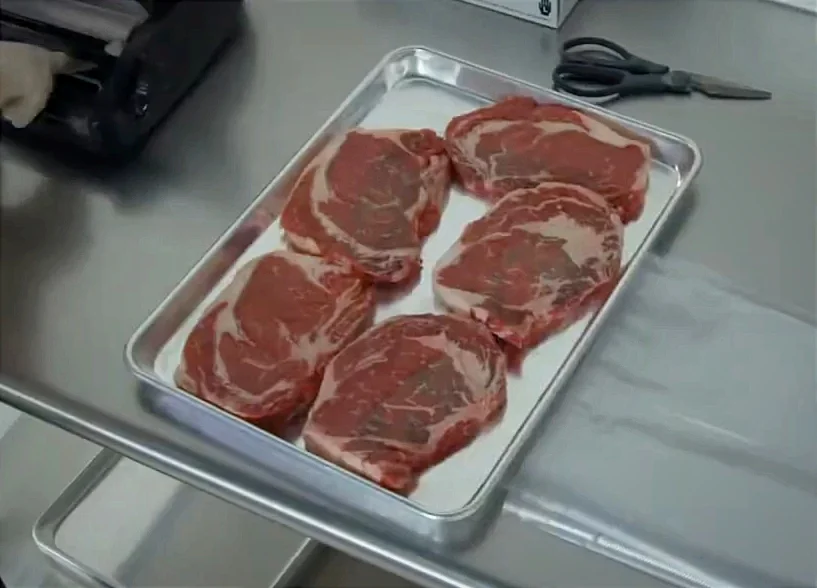
Packaging
Consider the best packages and vacuum rolls suitable for the meat if you have them. Various types of vacuum rolls can be ideal for your vacuum seal. Find the one that offers the best packaging strength.
Screen for any leaks and issues. Replace them with new ones in case of leakage issues.
Seal and Label
Before you completely seal the bag, go for the first end. Use the vacuum sealer properly and seal the one end of the roll. Also, label the bag with the required info.
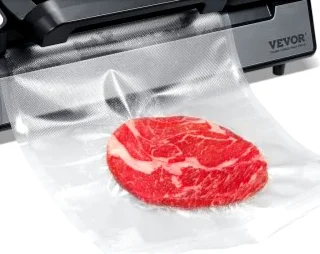
Insert Bag into Machine
When one end is fully sealed, it is time to send the vacuum roll into the sealer machine. Check the alignment of the vacuum roll and ensure a parallel pattern of the vacuum sealer strip with the bag. It verifies the effective sealing and optimal packaging of your vacuum-sealing meat.
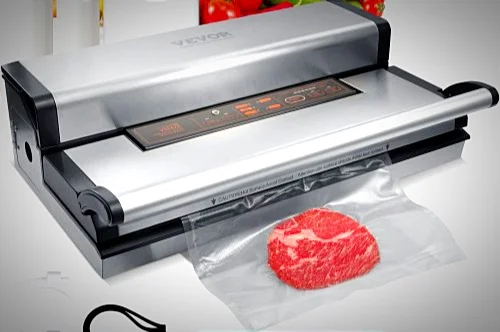
Remove Air
The vacuum sealing process involves removing the air and creating an airtight seal. A VEVOR vacuum sealer can offer an impressive job at such a point. It will remove the oxygen and suck all the air out of your roll.
Seal Bag
Once all the air is out, let the vacuum sealer seal the other end of your vacuum bag. It happens automatically. Sometimes, the vacuum sealer is not vacuuming the roll. Either replace the vacuum seal that might have leaks or change the sealer.
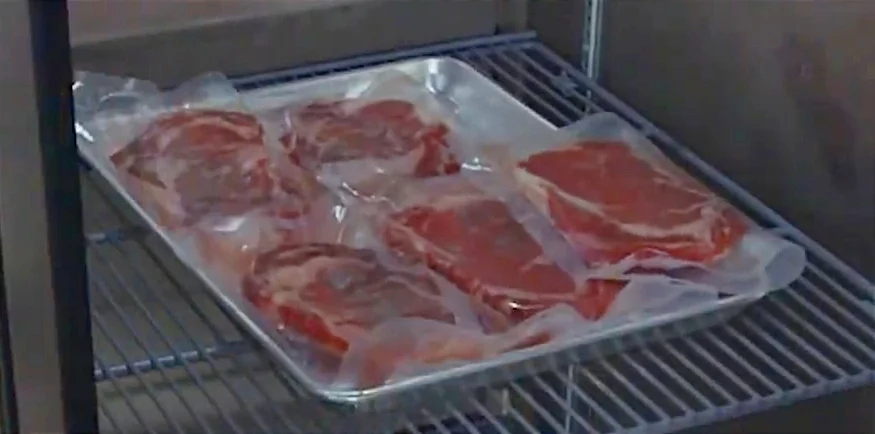
Part 4: VEVOR Vacuum Sealer: The Most Cost-effective Solution for Long-Term Meat Storage
VEVOR has top-quality vacuum sealers ready to preserve the meat. Let’s have a critical walk through the VEVOR vacuum sealer.
Features of VEVOR
- Powerful vacuum suction. 80kPa suction removes all the air from your vacuum bags and ensures airtight packaging.
- Powerful motor with upper heating filament design. Get rapid cooling and avoid all breaks in between the vacuum sealing processes.
- Built-in roll storage. There is no need to worry about the roll storage. Our built-in storage systems improve your ease and get you relief.
- Overheating protection. Unique safety systems prevent overheating and let the machine work without any accidents. No risk to your life is guaranteed!
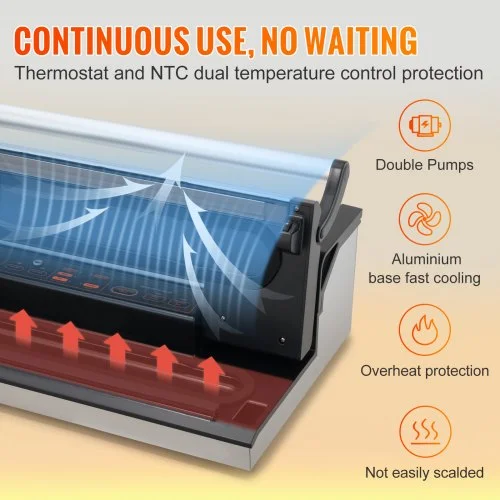
Benefits of using the VEVOR vacuum sealing machine
- Quality construction. Powerful pump and excellent material allow a long life and non-stop performance for years. Pocket the durability with our vacuum sealers.
- Less wait. Fast sealing due to the speedy motor system saves more time and does more sealing in less periods. You don’t have to worry about extended waits between sealing meat rolls.
- Versatile. Dry food to moist food, do all the sealing. Vacuum seals your vegetables, fruits, and meat instantly.
- Affordable costs. Forget the pocket-emptying charges. Our machines are quite affordable yet offer quality.
Part 5: Frequently Asked Questions about Vacuum-sealed Meat
How can you tell if vacuum-sealed food is rotten?
Bad smell is the first case in which you can understand the food has spoiled. It often occurs when bacteria penetrate, decompose food, and release lousy gases.
Can you vacuum-seal frozen meat?
Yes. It is a simple process:
- Get your meat and rinse it up with clean water.
- Put a vacuum bag seal and pass it through the vacuum sealing machine.
- Now, put the vacuum-sealed meat into the freezer.
Can you vacuum-seal cooked meat?
Yes, extend the life to 2 weeks without decaying or spoiling the meat with the vacuum seal. Ensure the seal doesn’t contain any oxygen or air.
Does vacuum-sealed meat need to be refrigerated?
Yes, you should refrigerate the vacuum-sealed meat because it provides an optimal storage system and ensures a better lifespan than room temperature.
How long does vacuum-sealed meat last in the fridge?
Vacuum-sealed meat life in the fridge is all about its cooking status. For example,
- 2 weeks in the fridge if cooked
- 5 days if uncooked.
Maintain the storage temperature for a longer life.
Why does vacuum-sealed meat turn brown?
When the hemoglobin content decreases in the vacuum-sealed meat, it starts changing color to brown. You shouldn’t use such meat as it can harm your health.
Conclusion
During the vacuum sealing process, clean up your meat and understand its expected shelf life. When sealing the meat, consider the best packaging material. Don’t compromise on the quality of your vacuum sealing machines. It is better to grab the flawless, easy-to-operate, and durable machines from the VEVOR!
VEVOR has all the top-quality vacuum sealers that give you comfort and solace of mind. Seamless experience and easy functioning make the sealing job a bed of roses. Do you want to try the top vacuum sealing machines? Go on, uncover the best deals, and choose the premium vacuum sealers now!

